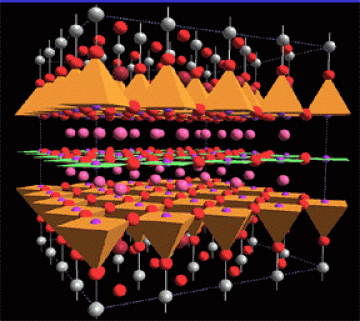Condensed matter physics stands as one of the most vibrant and pivotal branches of contemporary physics, functioning as the lens through which we explore the intricate tapestry of matter in its various forms. Much like an artist skillfully weaving together disparate threads to produce a cohesive masterpiece, condensed matter physics seeks to unravel the complexities of matter, connecting theories and empirical findings to offer insights into the fundamental principles governing the universe. This science delves into the properties and behavior of materials, notably solids and liquids, revealing their underlying structures and the forces that govern their interactions.
At the heart of condensed matter physics lies the intriguing interplay between microscopic constituents and macroscopic phenomena. Imagine a vast symphony: individual instruments play distinct notes, yet together they create a harmonic convergence that can evoke a spectrum of emotions. Similarly, condensed matter physics studies how atoms and molecules, akin to musical instruments, combine their unique properties to produce emergent behaviors that cannot be predicted by merely examining their isolated components. This focus on collective behaviors is complemented by sophisticated theoretical frameworks and experimental techniques that probe the fabric of matter at various scales.
One of the most compelling aspects of condensed matter physics is its ability to elucidate the properties of materials under various conditions. The study of superconductivity, for instance, exemplifies the sheer wonder this field encapsulates. Superconductors, once thought to be a scientific curiosity, now hold the promise of revolutionizing energy transmission, transportation, and computing. Their ability to conduct electricity without resistance below a critical temperature invites comparisons to a stream flowing unimpeded—an ideal state where energy can traverse without loss. This phenomenon, realized through the meticulous arrangement of electrons within crystalline lattices, demonstrates the crucial role that condensed matter physics plays in the synthesis of technological advancements.
The realms of magnetism and ferroelectricity further showcase the unique appeal of condensed matter physics. The magnetic properties of materials, once merely a quaint curiosity, have evolved into a foundational aspect of modern technology, from data storage systems to electric motors. The intricate alignment of atomic spins, much like the synchronized movements of a choreographed dance, yields properties that can be harnessed for practical use. The manipulation of these properties not only underpins everyday devices but also opens avenues for future innovations, such as spintronic devices that utilize electron spin rather than charge to transmit information, thereby propelling information technology into a new age.
Moreover, condensed matter physics represents a fertile ground for interdisciplinary collaboration. The boundaries between physics, chemistry, materials science, and nanotechnology blur as researchers engage in a dialogue that fosters innovation and drives exploration. The creation of novel materials, such as graphene—often hailed as a wonder material—stems from the confluence of insights across disciplines. Graphene’s exceptional conductivity and mechanical strength illustrate the profound implications that arise from understanding matter at the nanoscale, opening doors to applications in electronics, energy storage, and even biomedical devices.
Investigating the phenomena of phase transitions further emphasizes the utility of condensed matter physics. The transition of water from liquid to solid showcases the transformation of states, driven by temperature and pressure changes that are strikingly reminiscent of broader socio-political transformations. As molecular interactions shift, leading to emergent properties that define solid ice or vaporous steam, so too can societal structures evolve in response to external stimuli. Understanding these transitions provides profound insights into materials science, tailoring material behaviors for specific applications, from constructing resilient infrastructure to developing advanced energy materials.
Moreover, the exploration of quantum phenomena within condensed matter systems presents an intellectual voyage into uncharted territories. Quantum entanglement and topological states of matter, heralded as the next frontier in theoretical and experimental physics, invoke awe as they challenge classical perspectives. The implications of quantum computing, fundamentally rooted in principles of superposition and entanglement, could catalyze breakthroughs in complex problem-solving currently beyond our reach. The quest for topological phases has ushered in a new paradigm in understanding matter, reminiscent of uncovering hidden dimensions of a multifaceted universe.
Despite its profound implications, the study of condensed matter physics faces a myriad of challenges, not the least of which includes the intricacies of theoretical modeling and experimental validation. As researchers navigate the vast sea of electron interactions and phase behaviors, the hunt for new phenomena drives the scientific community forward, propelled by curiosity and creativity. Innovative methodologies, such as advanced imaging techniques and high-energy experiments, augment our understanding and pave the way for new discoveries, reflecting the persistent human endeavor to unveil the secrets of the cosmos.
In conclusion, condensed matter physics stands as a cornerstone of modern science, bridging intricate theoretical frameworks with practical applications that resonate across myriad facets of daily life. Its interdisciplinary nature, coupled with its inquiry into the fundamental characteristics of matter, underscores its significance in driving technological advancements and fostering an enriched understanding of the universe. As we continue to unravel the complexities of condensed matter, we embrace not only the revelation of new knowledge but also the cultivation of an insatiable curiosity that propels human progress.












